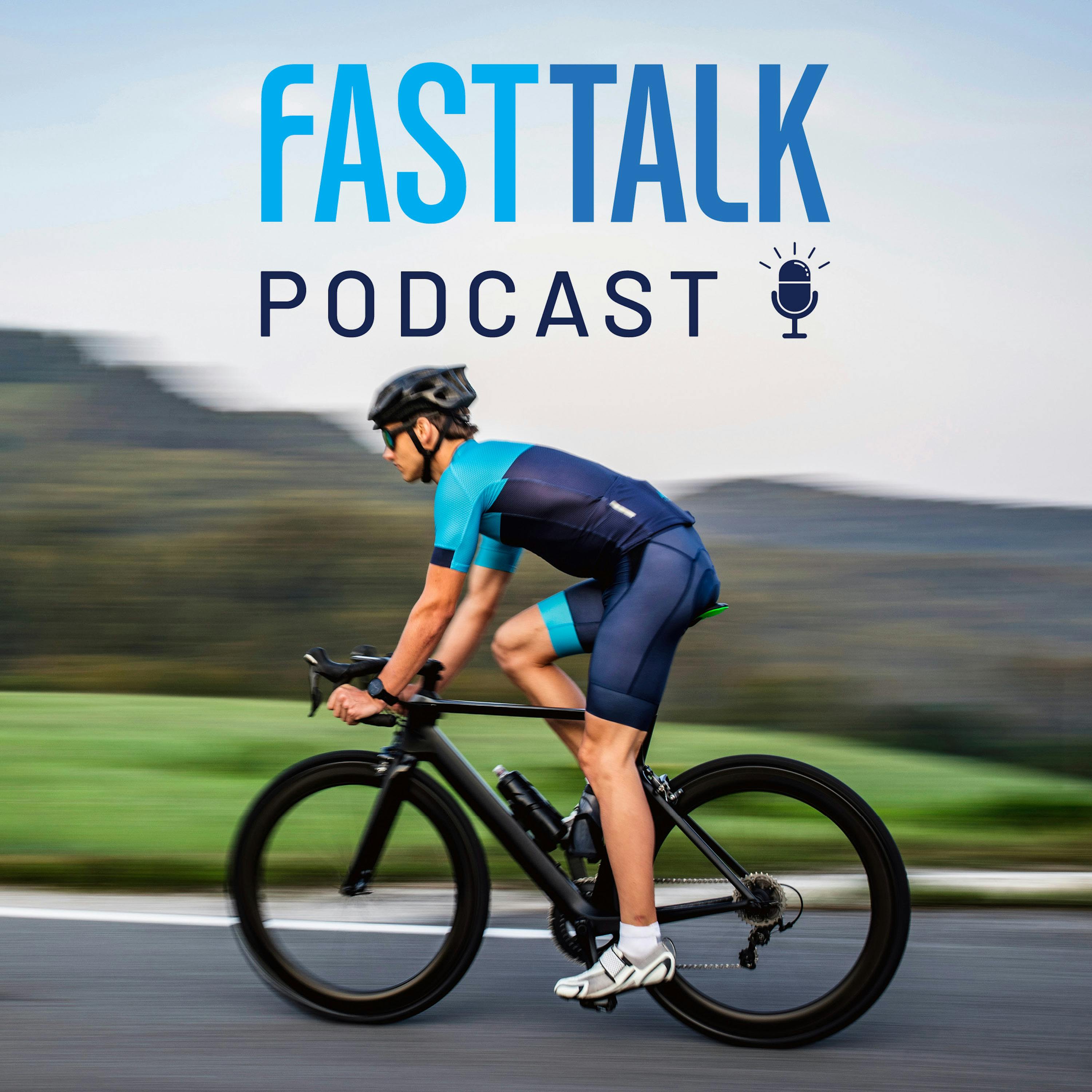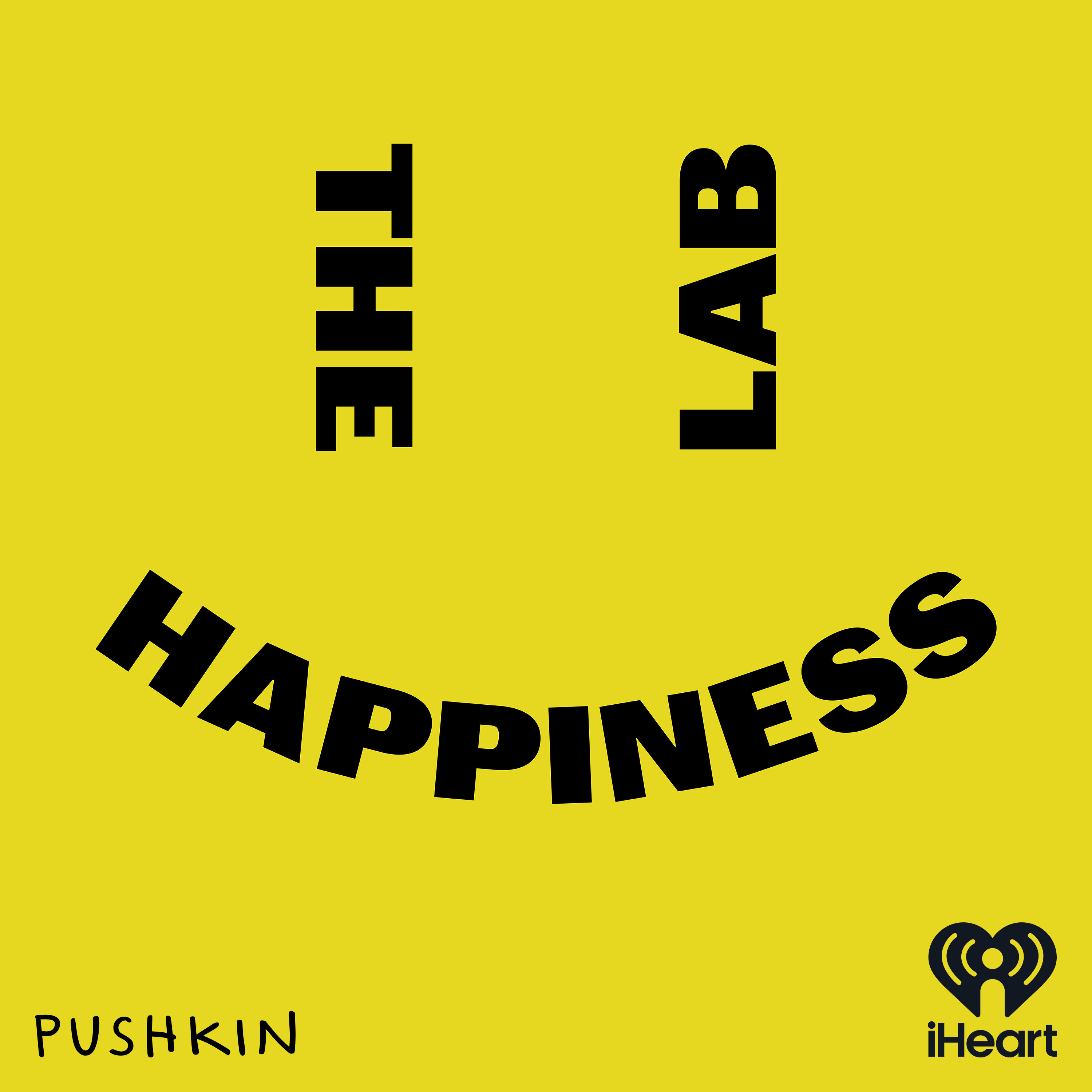
The Full Circle Podcast
The Full Circle Podcast offers listeners insights into topics and ideas pertaining to endurance sports training and racing. Hosted by Coach Laura Henry, this podcast releases episodes weekly and discusses training best practices, effective workouts, compelling research, coaching methodologies, physiology and recovery, and the best tools to help guide you unlock your potential and achieve your best performance.
The Full Circle Podcast is part of Full Circle Endurance, which is an endurance sports coaching company that serves athletes in many endurance sports, including triathlon, running, cycling, and open water swimming.
To learn more about how Full Circle Endurance can help you reach your goals, please visit us at: https://FullCircleEndurance.com/
The Full Circle Podcast
When Can You Add More Training?
“When can I do more?”
This is one of the most common questions we hear from athletes because most athletes are excited about and/or anxious about needing to do more in their training. However, the decision about whether or not to add more to an athlete’s training is something that should be treated with reverence, and there are many different factors to consider before deciding that adding more to training is the appropriate choice.
Read this Article:
https://www.fullcircleendurance.com/blog/when-can-you-add-more-training
Ready to start training? Check out our Coaching and Training Plan options:
Learn more about Full Circle Endurance: https://FullCircleEndurance.com/
Submit questions to be answered on the show: https://FullCircleEndurance.com/podcast/
Reach out to Coach Laura Henry: Hello@FullCircleEndurance.com
Disclaimer: The information shared in this podcast is for educational and informational purposes only and is not a substitute for professional medical advice, diagnosis, or treatment. Always seek the advice of your qualified healthcare provider with any questions you may have regarding a medical condition or health goals. Never disregard professional medical advice or delay in seeking it because of something you heard on this podcast. Reliance on any information provided is solely at your own risk.
(0:04 - 14:06)
Hello and welcome to the Full Circle Podcast, your source for insights into the science and art of endurance sports training and racing. I'm your host, Coach Laura Henry. When can I do more? Some variation of this question is one of the most common questions I hear from the athletes who I coach.
Humans, and therefore athletes, are extremely biased towards solutions that involve addition. In the context of endurance sports training, this means that athletes believe that doing more, more training, more volume, and or more intensity, is the best way to accomplish and reach their goals. It is exceptionally rare for me to encounter an athlete who is seeking to do less or who believes that doing less will lead them to success.
As a result, asking about when they will be able to do more is one of the most common queries that they have when they are either beginning training or when they are in the middle of training for a particular goal. The answer to the question, when can I do more, is the same answer that I give in response to so many questions that athletes ask me. It depends.
No matter whether they are runners, triathletes, or cyclists, generally speaking, endurance athletes are implementing and following a training protocol that is based on the principle of progressive overload. Progressive overload is a training methodology that involves gradually increasing the frequency, intensity, or volume of an activity over the course of a training plan in the interest of stimulating desired adaptations in the body to help endurance athletes reach their goals. These desired adaptations in the body can include, but are not limited to, fatigue resistance, muscular and soft tissue strength, cardiovascular endurance, increased bone density, increased heart volume, lower blood pressure, and lower cholesterol.
Practically speaking, what the principle of progressive overload looks like is this. Workouts in one week are slightly longer or slightly more intense than they were in the previous week. After two to three weeks of building week over week like this, there is a recovery week or a down week where volume is slightly reduced from what it was in the previous two to three weeks.
Collectively, these periods of up and down weeks are called mesocycles. After several months of following a program like this, your training plan will contain workouts that are significantly longer and or are more intense than your workouts were at the beginning of your training plan. How long these workouts ultimately are, aka how much more you'll be doing week over week, is first and foremost dependent on where you start from, ability, capacity, and fitness wise.
You can only ever train where you are. If you attempt to train beyond your current capacity, you will sustain an injury. Planning for training loads that are under your current training capacity, aka doing a little bit less than the absolute most that you're able to do at any given point in time, is the way to be able to successfully, consistently be able to add more to your training, both over the course of an entire annual training plan and over the course of many years, as you build towards your goals.
The ability to be consistent, aka to not have disruptions to your training, especially any disruptions that are caused by injury, is the key to unlocking the ability to be able to add more to training continuously over time. The second most important element to determining when you can do more is assessing how you are absorbing the training that you are doing. In essence, you need to prove to yourself and to a coach, if you are working with one, that you can handle a given training load.
An athlete's ability to handle a given training load is subject to a lot of factors, their current fitness level, their available time to train, their motivation to train, their support system, aka their family, friends, etc. and more. If you're absorbing training well, you can do more.
Training is not just about checking a box and completing a given workout or a given series of workouts. You need to both complete the training and absorb the training. Absorbing training means that you need to be recovering well enough after each session to execute subsequent sessions with high quality.
It's not enough to nail one session. Your ability to execute consecutive training workouts with high quality is necessary to see progress over time. Additionally, you also need to be seeing signs of adaptation to your training.
Adaptation is a process by which an organism adjusts to its environment. As the environment changes, the organism must adapt to survive. In the context of endurance sports, the environment is the constantly varying workloads that athletes are experiencing via their workouts.
Thus, training adaptation refers to the adjustments, changes and improvements that manifest physiologically in the body in response to training and workouts. It should also be noted that training adaptations can be psychological. The adjustments and changes to training that happen in the mind are just as necessary and valuable as the physiological changes that happen in response to training.
Training adaptation takes on many forms, and there are both objective and subjective indicators that it is taking place. Objective indicators that you are experiencing desired and positive training adaptations include, but are not limited to, decreased average heart rates for similar workouts, a decrease in the amount of time that it takes for one's heart rate to return to normal after an interval or after a workout, increased speed over similar workouts or intervals, increased cadence and more. Subjective indicators are your own self-assessment of how you are feeling before, during and after workouts, and positive feelings about training generally indicate that you are experiencing positive training adaptations.
Subjective indicators, aka an athlete's feedback, are valuable because objective metrics such as heart rate, power and speed only tell one part of an athlete's training story. Seeing those metrics alongside what an athlete's feedback is completes the picture and gives a comprehensive account of how training is going in all of the ways that matter. That being said, subjective indicators can be on the deceptive side because it's easy for athletes to fall into the trap of saying what they want to be true, that everything is awesome, versus what they actually feel and what is actually true.
In my experience, this is the number one way that athletes get injured. They dismiss what their body is actually telling them because what they are feeling is in opposition to what they want to be feeling and they overdo it and they cause an injury. So for instance, it's not uncommon for an athlete to say that they feel good about their training and their workouts because they want to feel good about their training and they want to be able to do more.
In that same vein, it's not uncommon for athletes to say this, even if they have a niggle or that they are feeling tired and worn down by training. That being said, being honest about how you are feeling is necessary if you want to successfully be able to add more to training. The ability to truly be self-aware and accurately state how you are feeling, even if, and especially if, you don't like it in response to training is the mark of a mature athlete.
If you are not honest about how you are feeling and you try to add more of anything to your training, you will ultimately exceed your training capacity and will likely end up injured or burnt out. Absorbing training and seeing positive training adaptations combine to become the green light to be able to add more to training. More can come in the form of additional volume, intensity, or both.
It can also come in the form of a new activity, such as adding in running to a training plan that currently includes swimming and strength training, or a new mechanical or postural element, such as riding a different bike fit position. It is only safe and reasonable to progress your training, aka to add more to your training, once you've adapted to the stimulus you've recently been imposing in training. Recently means over the last three to eight weeks.
You may have had a high level of fitness in the past, but what you've done in the past is not the most relevant piece of the puzzle when it comes to determining what training is best for you right now. What you've recently done, aka where you currently are, is the most relevant and important thing to consider. There are many signs that you should not be doing more in training.
As I mentioned earlier, it's very common for athletes to discount or outright ignore these signs if the signs they are seeing are not in alignment with what they want to be doing in training. When a given workout session feels difficult or a given week of training feels difficult, this is a sign that you either need to hold there or even regress slightly. Remember, there is value in subtractive changes.
Difficult can mean many things. That the session itself was too hard for you to complete successfully or with quality. That you felt more fatigued than normal after a given workout.
That you felt a niggle or some discomfort during or after a workout. That you weren't able to execute a subsequent training session in a week well after completing other workouts in a given training week. If you find that you are experiencing any of these things, the wise choice is to forego progressions, to reassess your current training, and to either hold where you are in your workouts or regress back to workouts in which you were feeling stronger and better.
Once you've started to feel better in your workouts, either in the holding pattern workouts or in the regressed workouts, you can safely progress to the next step from there. Assuming that you are currently absorbing training well, how do you safely add more training to your training plan? You can generally safely change one variable of your training at a time, or you can impose one new stimulus at a time. In the context of endurance sports, training stimulus refers to the specific type of stress you are imposing on the body in workouts that is intended to elicit specific responses in the body that result in desired adaptations, such as improved endurance or faster paces.
If you try to change too many variables and or impose multiple new stimuli concurrently, you will likely be doing too much too soon and exceeding your current capacity. Examples of changes in stimulus include, but are not limited to, volume, how long a workout is and how much overall training you are completing in a training week, intensity, how hard an interval or a workout is, frequency, how often you are doing a given type of workout or how often you are doing workouts in general, number of workout days, how many days you are planning workouts in a training week, workout discipline, what type of workout you are doing, cycling, running, swimming, and strength training are all examples of workout disciplines, rest time, how long your rest intervals are within a workout, number of intervals, how many intervals of intensity that you plan within a workout, mechanical changes, for example, changes to your running form, swimming mechanics, or your bike fit. Generally speaking, you only want to change one of these at a time when you are seeking to add more.
So for instance, you would want to increase your volume before increasing the intensity of your workouts by making your workouts slightly longer before you make them slightly harder effort or speed wise. This principle of laying down an endurance foundation before layering in intensity is one of the fastest ways to get faster in training. Or if you want to add something else to your training, such as strength training or running, you should scale back on the volume of what you are currently doing workout wise.
So your overall training volume remains the same when you add in the new discipline. For instance, if you are currently training seven hours per week and you want to add in an hour of strength training, you should scale back your other workouts so that they total six hours. And then that means you are still completing seven total hours.
Once you include that hour of strength training by changing one variable at a time and ensuring that you are responding positively to that change, you will have a higher probability of being able to successfully change more variables in the future and to add more to your training over time. Over the course of an annual training plan, the ability to safely add more to training is the goal of almost all endurance athletes, no matter what goals they are training for. This ability to safely add more to training is dependent on many important factors, most especially your current training ability and capacity, as well as how well you're absorbing and adapting to training.
By monitoring your training and being honest in your self-assessments of your training, you can safely and successfully navigate the path to adding more to your training. That was another episode of the Full Circle Podcast. Subscribe to the Full Circle Podcast wherever you listen to your favorite podcasts.
If you like what you listen to, please be sure to leave us a rating and review as this goes a long way in helping us reach others. The thoughts and opinions expressed on the Full Circle Podcast are those of the individual. As always, we love to hear from you and we value your feedback.
Please send us an email at podcast at fullcircleendurance.com or visit us at fullcircleendurance.com backslash podcast. To find training plans, see what other coaching services we offer, or to join our community, please visit fullcircleendurance.com. I'm Coach Laura Henry. Thanks for listening.
Podcasts we love
Check out these other fine podcasts recommended by us, not an algorithm.

Fast Talk
Fast Talk Labs
excellence, actually
Steve Magness, Brad Stulberg, & Clay Skipper
Deep Questions with Cal Newport
Cal Newport
